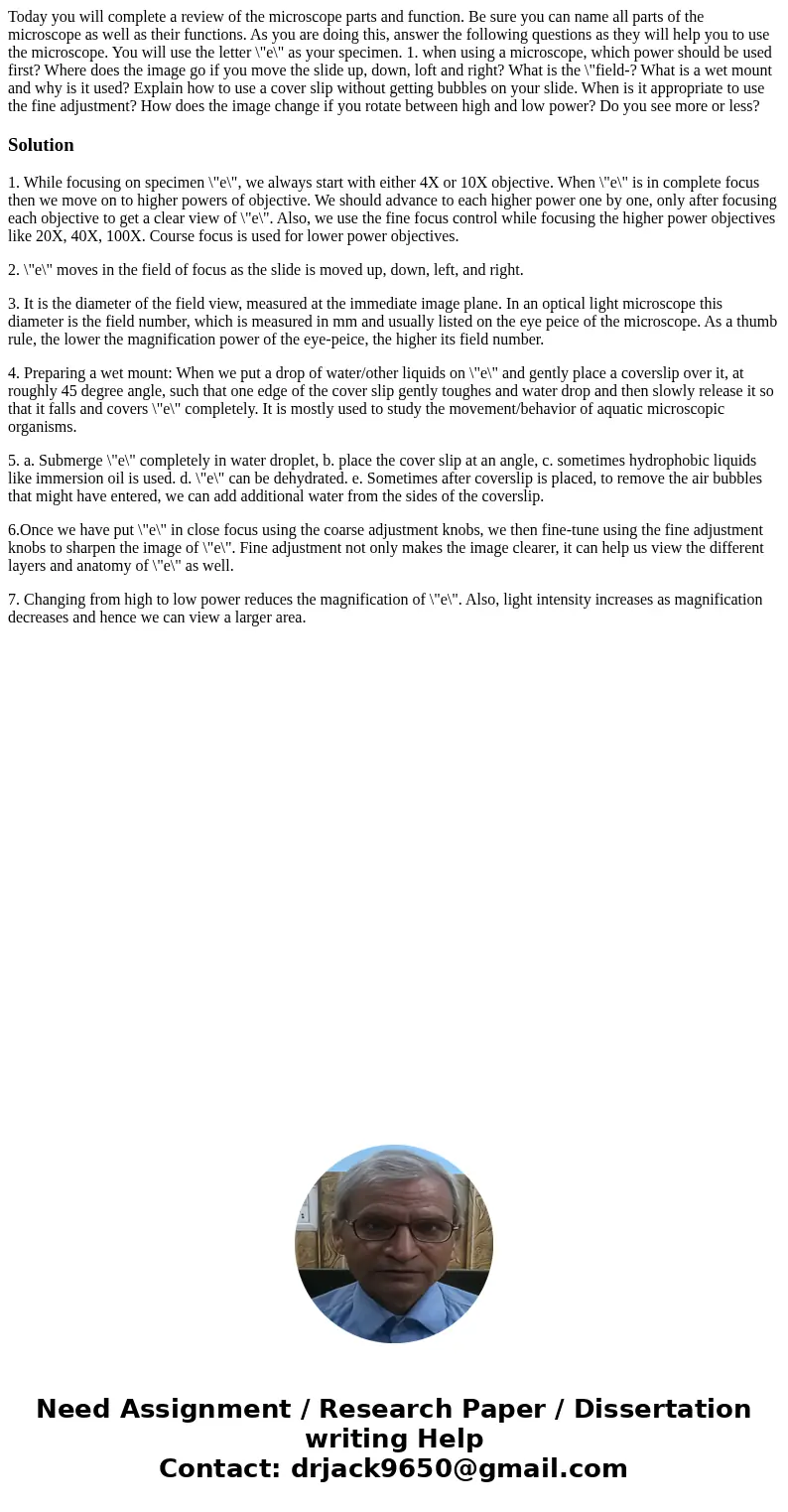Today you will complete a review of the microscope parts and
Solution
1. While focusing on specimen \"e\", we always start with either 4X or 10X objective. When \"e\" is in complete focus then we move on to higher powers of objective. We should advance to each higher power one by one, only after focusing each objective to get a clear view of \"e\". Also, we use the fine focus control while focusing the higher power objectives like 20X, 40X, 100X. Course focus is used for lower power objectives.
2. \"e\" moves in the field of focus as the slide is moved up, down, left, and right.
3. It is the diameter of the field view, measured at the immediate image plane. In an optical light microscope this diameter is the field number, which is measured in mm and usually listed on the eye peice of the microscope. As a thumb rule, the lower the magnification power of the eye-peice, the higher its field number.
4. Preparing a wet mount: When we put a drop of water/other liquids on \"e\" and gently place a coverslip over it, at roughly 45 degree angle, such that one edge of the cover slip gently toughes and water drop and then slowly release it so that it falls and covers \"e\" completely. It is mostly used to study the movement/behavior of aquatic microscopic organisms.
5. a. Submerge \"e\" completely in water droplet, b. place the cover slip at an angle, c. sometimes hydrophobic liquids like immersion oil is used. d. \"e\" can be dehydrated. e. Sometimes after coverslip is placed, to remove the air bubbles that might have entered, we can add additional water from the sides of the coverslip.
6.Once we have put \"e\" in close focus using the coarse adjustment knobs, we then fine-tune using the fine adjustment knobs to sharpen the image of \"e\". Fine adjustment not only makes the image clearer, it can help us view the different layers and anatomy of \"e\" as well.
7. Changing from high to low power reduces the magnification of \"e\". Also, light intensity increases as magnification decreases and hence we can view a larger area.

 Homework Sourse
Homework Sourse